Zhiquan Ye
OntoZSL: Ontology-enhanced Zero-shot Learning
Feb 15, 2021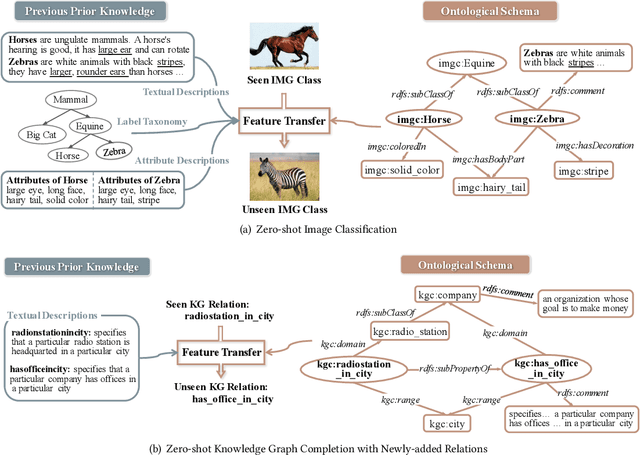

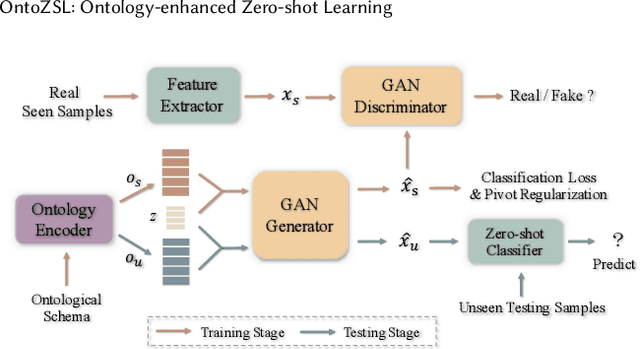

Abstract:Zero-shot Learning (ZSL), which aims to predict for those classes that have never appeared in the training data, has arisen hot research interests. The key of implementing ZSL is to leverage the prior knowledge of classes which builds the semantic relationship between classes and enables the transfer of the learned models (e.g., features) from training classes (i.e., seen classes) to unseen classes. However, the priors adopted by the existing methods are relatively limited with incomplete semantics. In this paper, we explore richer and more competitive prior knowledge to model the inter-class relationship for ZSL via ontology-based knowledge representation and semantic embedding. Meanwhile, to address the data imbalance between seen classes and unseen classes, we developed a generative ZSL framework with Generative Adversarial Networks (GANs). Our main findings include: (i) an ontology-enhanced ZSL framework that can be applied to different domains, such as image classification (IMGC) and knowledge graph completion (KGC); (ii) a comprehensive evaluation with multiple zero-shot datasets from different domains, where our method often achieves better performance than the state-of-the-art models. In particular, on four representative ZSL baselines of IMGC, the ontology-based class semantics outperform the previous priors e.g., the word embeddings of classes by an average of 12.4 accuracy points in the standard ZSL across two example datasets (see Figure 4).
Exploiting Behavioral Consistence for Universal User Representation
Dec 11, 2020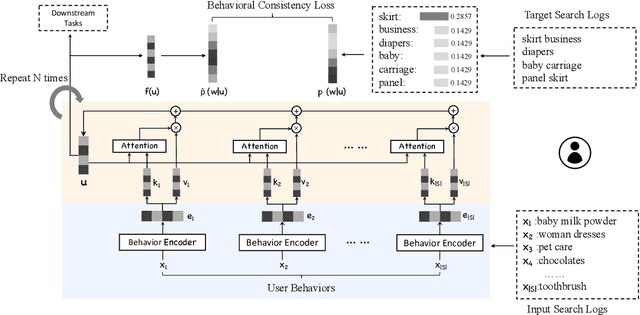

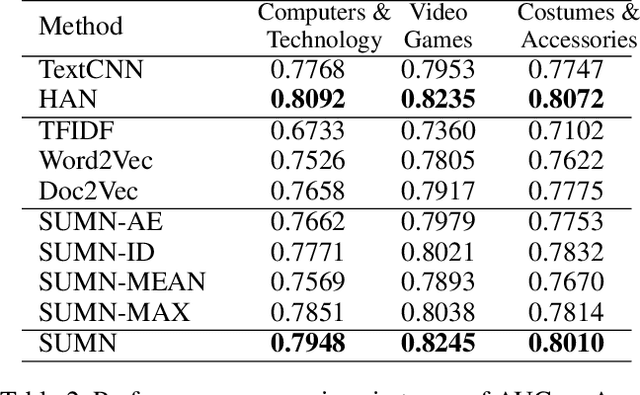
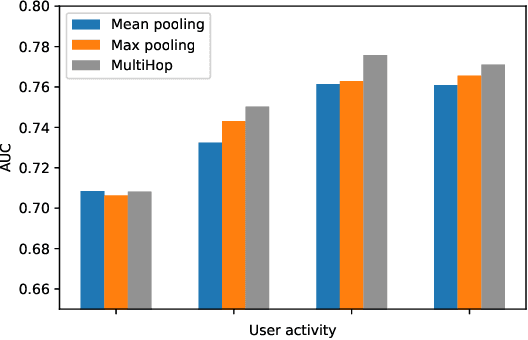
Abstract:User modeling is critical for developing personalized services in industry. A common way for user modeling is to learn user representations that can be distinguished by their interests or preferences. In this work, we focus on developing universal user representation model. The obtained universal representations are expected to contain rich information, and be applicable to various downstream applications without further modifications (e.g., user preference prediction and user profiling). Accordingly, we can be free from the heavy work of training task-specific models for every downstream task as in previous works. In specific, we propose Self-supervised User Modeling Network (SUMN) to encode behavior data into the universal representation. It includes two key components. The first one is a new learning objective, which guides the model to fully identify and preserve valuable user information under a self-supervised learning framework. The other one is a multi-hop aggregation layer, which benefits the model capacity in aggregating diverse behaviors. Extensive experiments on benchmark datasets show that our approach can outperform state-of-the-art unsupervised representation methods, and even compete with supervised ones.
Generative Adversarial Zero-shot Learning via Knowledge Graphs
Apr 07, 2020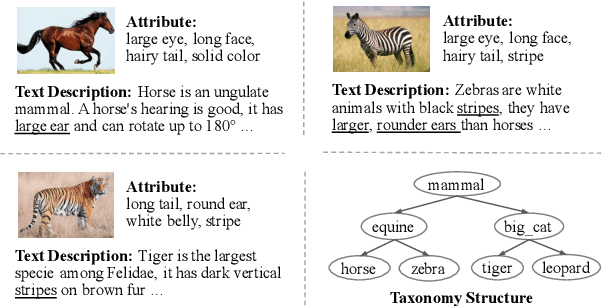


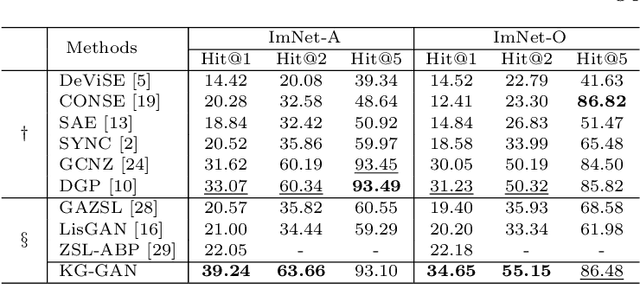
Abstract:Zero-shot learning (ZSL) is to handle the prediction of those unseen classes that have no labeled training data. Recently, generative methods like Generative Adversarial Networks (GANs) are being widely investigated for ZSL due to their high accuracy, generalization capability and so on. However, the side information of classes used now is limited to text descriptions and attribute annotations, which are in short of semantics of the classes. In this paper, we introduce a new generative ZSL method named KG-GAN by incorporating rich semantics in a knowledge graph (KG) into GANs. Specifically, we build upon Graph Neural Networks and encode KG from two views: class view and attribute view considering the different semantics of KG. With well-learned semantic embeddings for each node (representing a visual category), we leverage GANs to synthesize compelling visual features for unseen classes. According to our evaluation with multiple image classification datasets, KG-GAN can achieve better performance than the state-of-the-art baselines.
 Add to Chrome
Add to Chrome Add to Firefox
Add to Firefox Add to Edge
Add to Edge